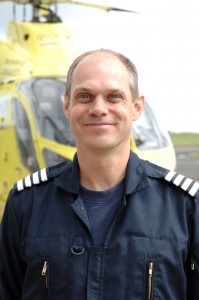Yorkshire Air Ambulance has become one of the first air operators in the country to achieve compliance with new European air safety regulations.
The emergency rapid response charity – which operates two MD902 Explorer helicopters – has revised all its operator manuals to meet new European Aviation Safety Agency (EASA) requirements that come into force on October 28.
It now becomes just the third out of nearly 70 UK operators to be awarded a new Air Operators Certificate by the Civil Aviation Authority, which is responsible for ensuring compliance with EASA regulations.
Yorkshire Air Ambulance Chief Pilot Andy Lister said: “We were very aware that we would be moving from a UK to a European system of governance and so have re-written all our operating manuals in accordance with the new procedures laid down by EASA.
“That has now been approved by the CAA and we are delighted that we have become one of the first air operators in the country to achieve this.”
Both of Yorkshire Air Ambulance’s aircraft have state-of-the-art medical and helicopter specification. They can reach speeds of up to 160mph and together provide a life saving rapid response emergency service to 5 million people across 4 million acres of Yorkshire.
In November 2012, the charity became the first air ambulance in the UK to acquire its own JAR-OPS Air Operators Certificate, employing all its own pilots.
Extended daily flying hours now ensure the service is operational for up to 14 hours during daylight, with the aircraft operating from air support units at RAF Topcliffe near Thirsk and a new, purpose-designed and developed base at Nostell, near Wakefield.
Andy added: “For many people the paperwork involved may seem onerous, but proper safety can only be achieved through the implementation of robust procedures that comply with published regulations. I am fortunate that the charity has provided support to ensure we achieve compliance so early.”
Yorkshire Air Ambulance has carried more than 5,500 people in its 13-year history directly to hospital for treatment. It needs to raise £9,990 each day to keep its two helicopters in the air and maintained – equivalent to £3.6 million each year.
Without any direct government funding, the only help the charity receives is through the secondment of its paramedics from the Yorkshire Ambulance Service NHS Trust.
Get in touch with our design team
Related articles








